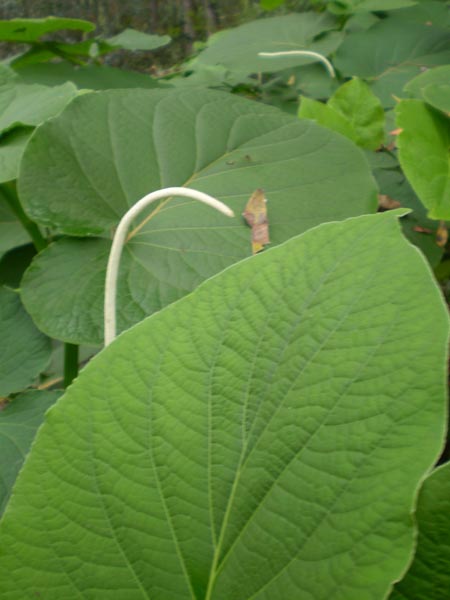
Root Beer Plant
Piper auritum
Basic Information
🌿 Family: Piperaceae🗺️ Zone: 9-11
Other Names:
- Hoja Santa
- Mexican Pepperleaf
- Sacred Pepper
- Vera Cruz Pepper
🌡️ Ideal Temperature : 60°F – 80°F
🔥 Heat Tolerance: Up to 95°F
❄️ Cold Tolerance: Down to 32°F
🌱 Type: Perennial
Layers
- Shrub
Companions
- Corn
- Beans
- Squash
Plants to Avoid
- None specified
Description
Piper auritum, commonly known as the Root Beer Plant, is a perennial shrub native to tropical regions of Central America. It can grow up to 6 meters (19 feet) in height and features large, heart-shaped, velvety leaves that emit a root beer-like fragrance when crushed. The plant produces small white flowers arranged in simple spikes that rise above the foliage. Its unique flavor profile, reminiscent of anise, eucalyptus, and sassafras, makes it a valued culinary herb in Mexican cuisine.
🌞💧 Sun and Water Requirements:
Prefers partial shade to full shade and thrives in moist, well-draining soils. While it enjoys ample water, it's important to avoid waterlogged conditions to prevent root rot.
✂️🫘 Methods to Propagate:
Propagation is typically achieved through root division or separation of plantlets that emerge from the soil. This method ensures the new plants maintain the characteristics of the parent plant.
🧑🌾👩🌾 When to Harvest:
Leaves can be harvested once the plant is well-established, typically in its second growing season. For optimal flavor, pick young, tender leaves as needed throughout the growing season.
Purpose
- **Edible**: The aromatic leaves are used to wrap and flavor foods such as tamales and meats, imparting a distinctive taste to various dishes.
- **Medicinal**: Traditionally used in folk medicine to treat ailments like fever and digestive issues.
- **Wildlife Attractor**: The plant's flowers attract pollinators, including bees and butterflies, supporting local ecosystems.
- **Ground Cover**: Its dense foliage provides effective ground cover, helping to suppress weeds and retain soil moisture.